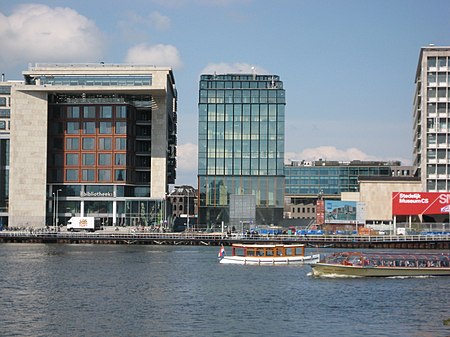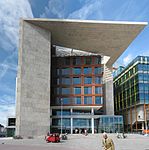The IJtunnel, opened on 30 October 1968, is an automobile tunnel under the IJ that connects the centre of Amsterdam with Amsterdam-Noord. The tunnel is part of a route across Amsterdam that connects the Ringweg North with the Ringweg South near Duivendrecht, via Nieuwe Leeuwarderweg, Valkenburgerstraat, Weesperstraat, Wibautstraat and Gooiseweg (S112).
The total length of the tunnel, including on- and off-ramps, is 1682 metres. The covered part is 1039 metres long. The deepest point of the tunnel lies 20.32 metres below sea-level. The tunnel was built of sections of rectangular concrete constructions of 24.8 x 8.75 metres, subdivided into two tubes for automobile traffic and in between tubes for cables and pipes.
Ventilators, located in two ventilation buildings on the banks of the IJ, blow clean air into the traffic areas via tubes under the surface of the road and openings in the tunnel walls, and suck polluted air out. At the entrance on the north side there are sun-blocking lattices over the road. These lattices are missing on the south side, where the Nemobuilding is built on top of the tunnel. The traffic in the tunnel is monitored by 22 closed-circuit cameras. A heating system prevents the forming of ice on the surface of the road, and a computer regulates the intensity of light at the beginning and the end of the tunnel, so that a gradual transition from tunnel light to daylight takes place.
The route through the IJtunnel is an urban avenue, formed out of two divided tunnels, each with two lanes of traffic. This four-lane road continues to the A10 in the north and to the Prins Hendrikkade in the south, where it is reduced to two lanes, one in each direction.











